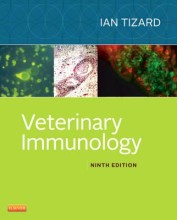Forage quality and conservation - Forage quality
44 important questions on Forage quality and conservation - Forage quality
What is feeding value?
Where does feeding value depent on?
- Feed conversion
Where does nutrient intake depend on?
- Nutrient concentration
- Higher grades + faster learning
- Never study anything twice
- 100% sure, 100% understanding
What is important with feed conversion?
What are the five resources of animal feed?
- Energy (carbohydrates, proteins, lipids)
- Protein (nitrogenous compounds)
- Minerals
- Vitamins
What types of water intake are there?
- External water intake
What is internal water intake?
What is external water intake?
What is the daily water requirement of a dairy cow?
What are the methods of determination of water content?
38 hours at 70 C
Why is the 48 hours at 70 C prefered?
What does the dry matter contain?
What is the dry matter content (grams per kg) of fresh grass?
What is the dry matter content (grams per kg) of grass silage?
How can addtional mineral supplements be fed?
- Mineral Mixture
- Soil
How do you correct mineral deficiencies in the soil?
Why do animals can eat soil?
What are the compounds containing nitrogen?
- Non-protein nitrogen (NPN)
What is the crude protein level (grma per kg dry matter) in grass (high fertilized)?
What is the crude protein level (grams per kg dry matter) in white clover?
What is the crude protein level (grams per kg dry matter) in maize silage?
Why is the level of crude protein in legumes usually higher than in grasses?
Why has maize silage a low crude protein level?
What percentage of dry matter in forages are carbohydrates?
What are examples of storage carbohydrates?
What are the characteristics of fibers?
- Structure and strength to the plant
- Increase with maturity of the plant
- Indigestible for mono-gastric animals
Why can ruminants digest fibers?
What is the percentage of lipids that forges contain?
What are the consequences of high percentage of fat (>7% DM) in the diet of dairy cows?
What are the major vitamins in forages and grasses?
What are the four stomach compartments of ruminants?
Reticulum
Omasum
Abomasum
What is the route the grass takes through the cow?
When the particles are small enough (after two or three times) they are transferred to the omasum and abomasum.
Finally the bolus (bolletje gras) is transferred via the intestines to the end
How much food can the rumen contain?
How long do the fiber particles remain n the rumen?
How is fermentation in the rumen promoted?
What are the micro-organisms in the rumen?
Whereto are carbohydrates digested?
What exactly happens during rumination?
-Adding saliva
- Increase of pH
What is the digestibility of the diet?
What is the calculation of the digestibility?
Why is the calculation of digestabillity 'apparent digestibility'?
How can endogeneous exretion an estimated?
- At a range of intake levels followed by regression analysis
- With fased animals during a few days
What is the digestibility (grams per kg dry matter) of young perennial rye grass?
Why do you want to harvest maize in senescence?
The question on the page originate from the summary of the following study material:
- A unique study and practice tool
- Never study anything twice again
- Get the grades you hope for
- 100% sure, 100% understanding




























